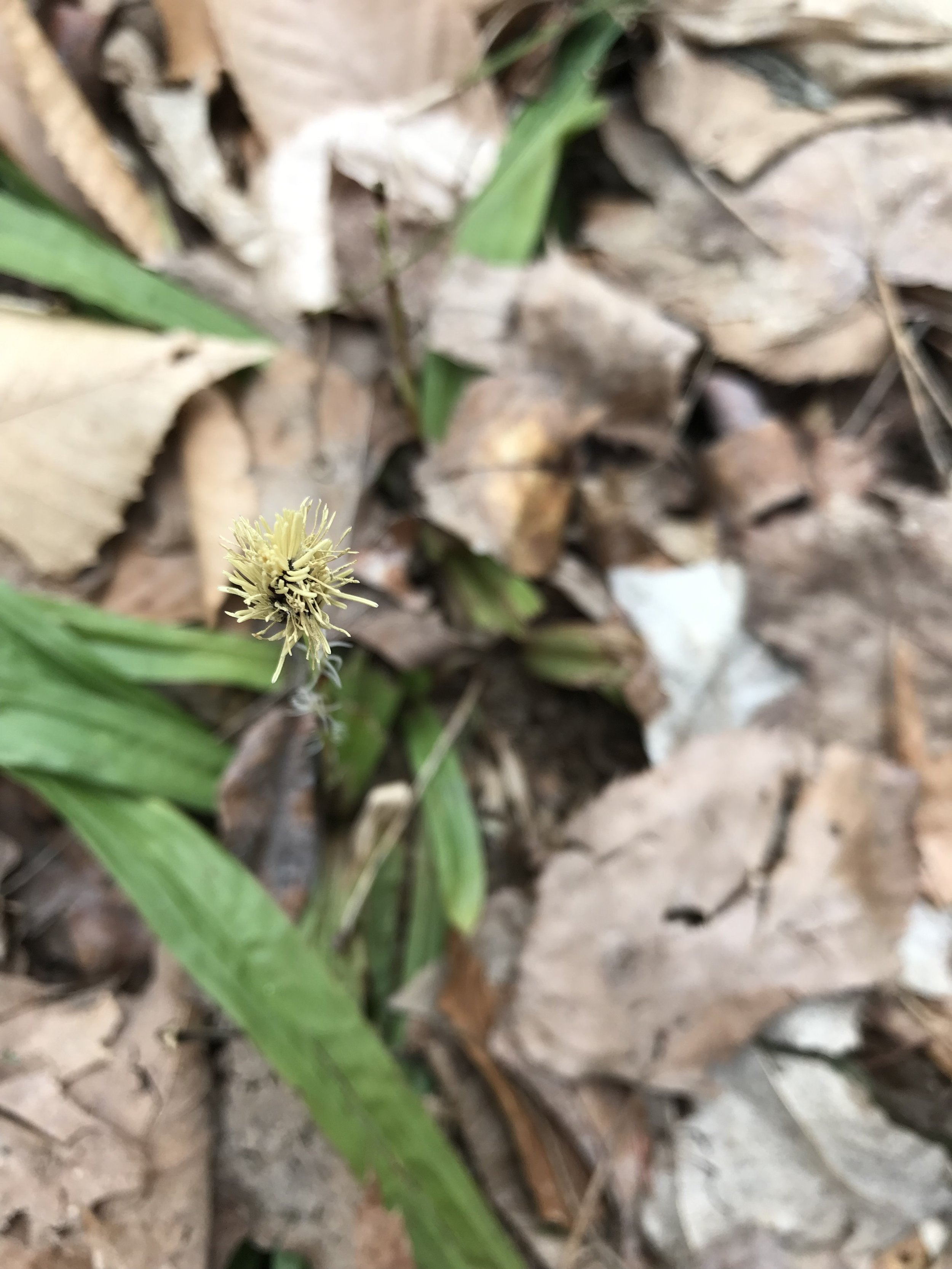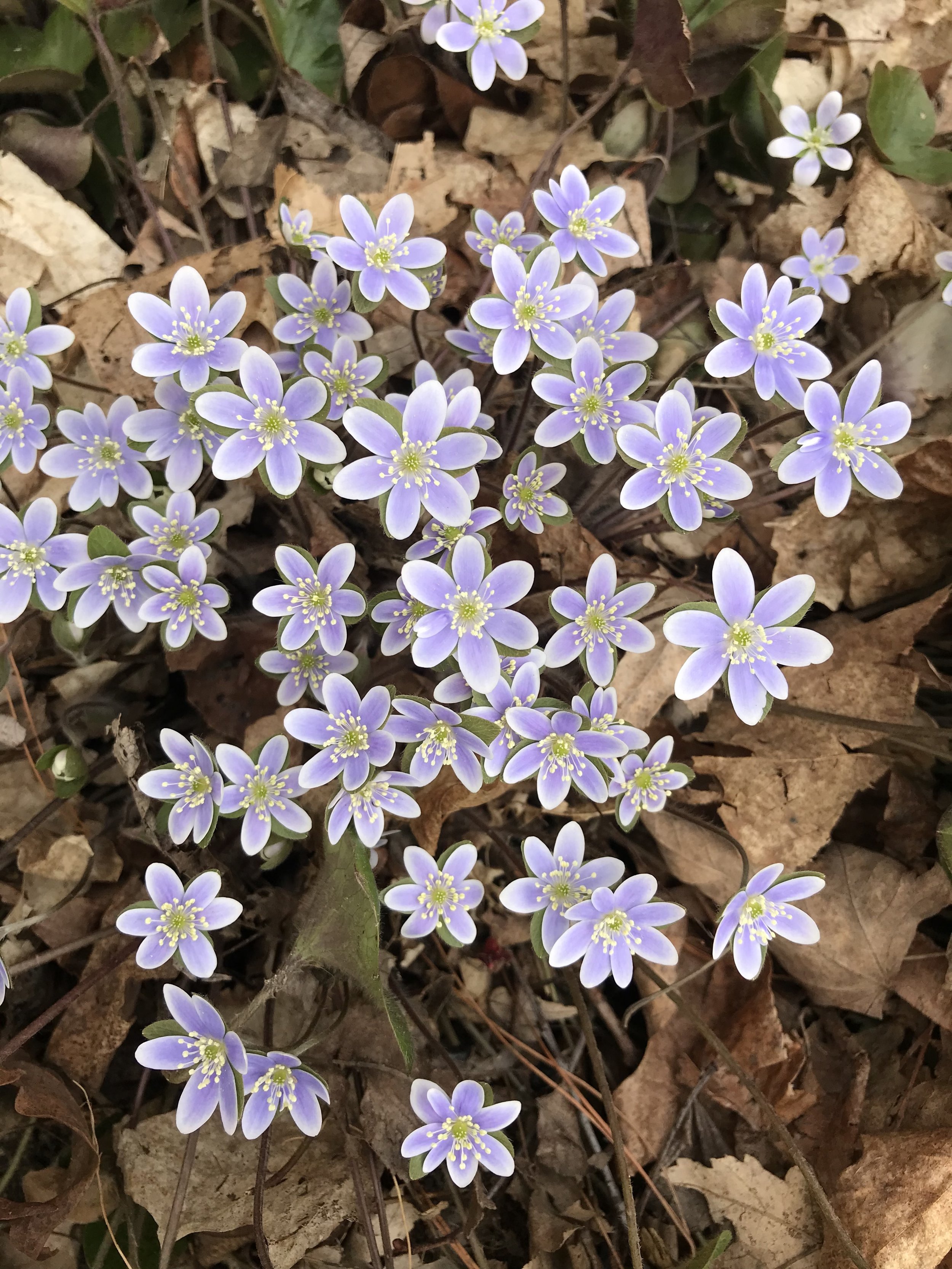 Image 1 of 5
Image 1 of 5

 Image 2 of 5
Image 2 of 5

 Image 3 of 5
Image 3 of 5

 Image 4 of 5
Image 4 of 5

 Image 5 of 5
Image 5 of 5






Round-lobed Hepatica (Hepatica americana)
Round-lobed Hepatica is not a true ephemeral because the leaves last through the winter, often turning a dark green to a brownish-red color. With leaves out throughout the winter they can photosynthesize whenever they aren’t covered in snow. Maybe this is why they bloom so early. The leaves wither away just as the flowers begin to bloom. Once the flowers begin to fade, new leaves push up and unfurl, shiny and fresh.
Hepatica takes two years to germinate. This is called double dormancy, meaning the seeds need a cold period, warm period and another cold period in the moist soil. When seeds germinate and emerge they spend the first year as two cotyledons (embryonic leaves which are the first to emerge).
The second year, the plants will have two regular leaves, doubling to four the next year. They are very slow growing. So, if you see a big mass of leaves or flowers, that plant has likely been around for a long while. Both blooms and leaves are covered in soft hairs as they emerge.
Both species of Hepatica have leaves with three lobes. They are named Hepatica (latin, meaning: of or pertaining to the liver) because of their resemblance to the human liver which is also lobed.
Blooms range in color from white to lavender, sometimes pink, to a dark sky blue. There are usually 6 petals and behind them are three green bracts (modified leaf). After pollination, seeds form in the center of the flower and drop off into the soil. Seedlings are often found around the base of the mother plant.
This species is found in drier sites with oak, hickory, aspen and pine, than Sharp-lobed Hepatica.
Round-lobed Hepatica (Hepatica americana)
Michigan Flora reference page for state distribution: Round-lobed Hepatica
height: 8 inches
bloom time: April-May
soil: medium, rich
sun: partial, shade
plant spacing: 6”
flower: white, blue, pink
life cycle: perennial
family: Ranunculaceae
seed source: Michigan
Round-lobed Hepatica is not a true ephemeral because the leaves last through the winter, often turning a dark green to a brownish-red color. With leaves out throughout the winter they can photosynthesize whenever they aren’t covered in snow. Maybe this is why they bloom so early. The leaves wither away just as the flowers begin to bloom. Once the flowers begin to fade, new leaves push up and unfurl, shiny and fresh.
Hepatica takes two years to germinate. This is called double dormancy, meaning the seeds need a cold period, warm period and another cold period in the moist soil. When seeds germinate and emerge they spend the first year as two cotyledons (embryonic leaves which are the first to emerge).
The second year, the plants will have two regular leaves, doubling to four the next year. They are very slow growing. So, if you see a big mass of leaves or flowers, that plant has likely been around for a long while. Both blooms and leaves are covered in soft hairs as they emerge.
Both species of Hepatica have leaves with three lobes. They are named Hepatica (latin, meaning: of or pertaining to the liver) because of their resemblance to the human liver which is also lobed.
Blooms range in color from white to lavender, sometimes pink, to a dark sky blue. There are usually 6 petals and behind them are three green bracts (modified leaf). After pollination, seeds form in the center of the flower and drop off into the soil. Seedlings are often found around the base of the mother plant.
This species is found in drier sites with oak, hickory, aspen and pine, than Sharp-lobed Hepatica.
Round-lobed Hepatica (Hepatica americana)
Michigan Flora reference page for state distribution: Round-lobed Hepatica
height: 8 inches
bloom time: April-May
soil: medium, rich
sun: partial, shade
plant spacing: 6”
flower: white, blue, pink
life cycle: perennial
family: Ranunculaceae
seed source: Michigan

































